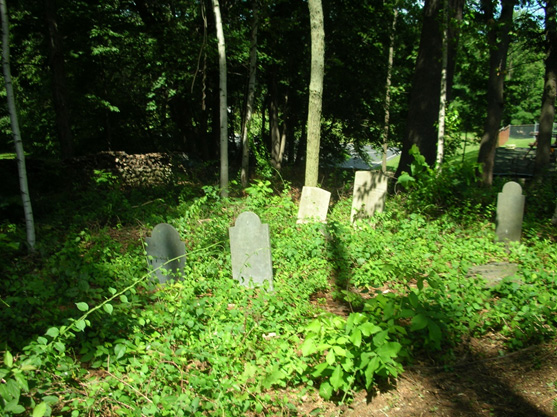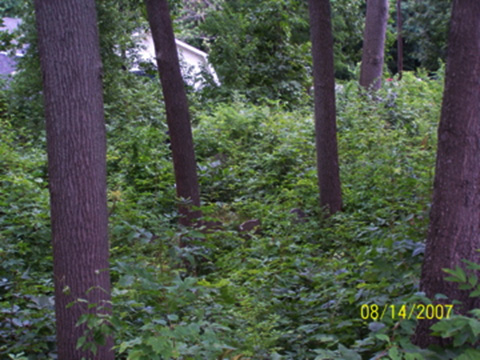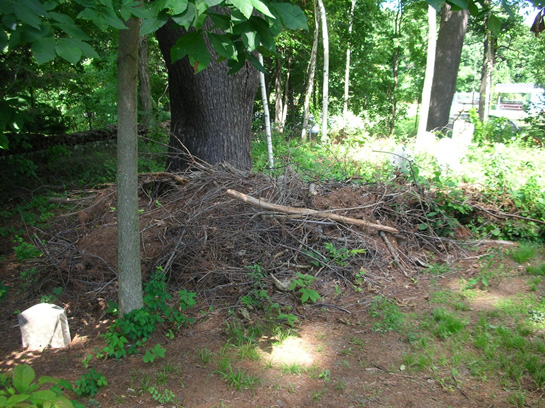A story by Debby
I’ve been an avid genealogist for several years now, my journey having begun in 1992 at the age of 40. It was only natural that my interests in town histories, our national history, people, customs and “old ways” easily developed. I loved going into libraries and sitting in their research rooms with my pad and pencil in hand. In fact, I loved all the hours. I spent in front of the microfilm machines, cranking away at the images and the names of people in the long ago past. I was truly bitten by the genealogy bug and it consumed every spare minute of my life. I’d leave after a full day of researching with a stiff neck, starving stomach and red eyes. While I never gave up, it only fueled the fire for the next research trip.
How lucky I was, after only a couple of months of this new genealogy disease, to find my Tenney ancestry all neatly typed and bound in a book called “The Tenney Family” or the “Descendants of Thomas Tenney of Rowley 1638-1890” by M. J. Tenney, published 1891, in the basement Library archives in Newburyport, Massachusetts. Still luckier was I that my Grandfather, George Sumner Tenney, born November 22, 1871 was actually listed in the last generations of the book. I felt my eyes bulging with surprise. So it didn’t take me long to track down a publisher who mailed me a photographic reprint. It was not the greatest format in which to receive this “priceless” book, but it was all mine, with all my ancestors so neatly cataloged.
 The book was Martha Jane Tenney’s first one published, dated 1891. It was before she had met with Prof. Jonathan Tenney of Albany, NY whose work was incorporated into her second edition, republished in 1904. In this first edition Martha Jane states on page 11 about Thomas Tenney, Sr., “He died in Bradford 20 February, 1699-1700, and is buried in the Old Cemetery, where his grave is marked by a dark slatestone”. * How nice it was to know where Thomas Tenney was buried I thought, I must make a trip there some day.
The book was Martha Jane Tenney’s first one published, dated 1891. It was before she had met with Prof. Jonathan Tenney of Albany, NY whose work was incorporated into her second edition, republished in 1904. In this first edition Martha Jane states on page 11 about Thomas Tenney, Sr., “He died in Bradford 20 February, 1699-1700, and is buried in the Old Cemetery, where his grave is marked by a dark slatestone”. * How nice it was to know where Thomas Tenney was buried I thought, I must make a trip there some day.
As I wrote, I’d been bitten by the bug, and obtaining M. J. Tenney’s book was all fine, but I began to wonder about my mother’s ancestors. So to satisfy my genealogy itch, I began researching my mother’s family, the Norton’s. We were all from Maine, so how hard could that be, such a sparsely populated state. I thought that I would go to the town hall in the place where my great grandfather was born. This surely would not take long at all. I’m sure you are all chuckling by now, but seriously, I did not expect that I would spend the next 18 years of my life hitting the not so famous “brick walls”.
Many of Maine’s Town records have disappeared over the years, either because of fires or through neglect. So going to the town cemeteries where my Norton ancestors had lived was a last resort in finding my ancestors. It was during my summer trips to Maine that I developed my passion for cemeteries. My first experience with cemeteries was with the search for my mother’s great-grandfather, who did not have a stone on his grave, but rather had only 3 lumps. (Thank goodness the town clerk had a sexton record that was written on the back of an envelope stating g-g-grandfather was buried there, with his wife and daughter, and with the comment “NO STONE”. No dates where on the envelope either, nothing in town vitals, so to this day I still don’t when he died nor exactly when he was born. I was thinking that this was unusual, and that everyone had a stone.
So I moved on because the town records noted that he moved there from New Portland, Maine. Now, there is only one Norton family in New Portland of which “No Stone Norton” could have been the son. I checked back one more generation to find that “No Stone” was the son of Curtis Norton. Of course Curtis moved out of New Portland and I finally found him in a cemetery in his new town, his real name being John C. Norton, with dates. So through a process of elimination, I could now be pretty sure that John, or Curtis, or as he sometimes was referred to in Census records, Corliss, was the son of Peter Norton of New Portland, ME. Peter had moved from Massachusetts in 1792 to the wilds of Maine, with all kinds of deeds referring to his living there.
There were no town records because “They were thrown out years ago to make room in town hall” according to the town clerk. So, I hooked up with the town historian who took me around to all the town cemeteries. We were sure to find him, I thought, because he lived there for many years – even before it was a town. So, it was on this sunny summer day in 1999, on the back roads of Maine, that the historian and I searched. Searching several old cemeteries. The story ended the same way every time. Peter seemed not to have been there.
Finally we arrived at the last and oldest cemetery, near the place Peter Norton would have lived. It seems like a lost cause. Those poor old stones, in most cases, were made of old slate, splitting, tilting, snapped off at ground level, and laying face down in holes of long ago sunken graves. Trees swallowed some stones that somehow had survived the falling broken limbs. Here were lying men, women and children, who left their homes of comfort in Massachusetts to etch out new lives, build schools and churches, cut down acres of forest, burn the stomps to scratch out fields so they could feed their families, roll rocks out of the fields and build fences and roads. And here they all were forgotten. I fell to my knees and cried my heart out. How could a town let this happen? They gave so much, asked nothing in return of future generations, other than to tend the cemeteries where they lay.
 Surely maintaining cemeteries is such a simple aspect of living. Are we so busy, that we over look our prior generations because we didn’t know them? They were fathers and mothers, and spent their lives working hard so that our now world is a better one. We live everyday with the results of their hard work but we have let them down. These cemeteries of my g-g-grandparents, whom I never knew, don’t look like the one whose graves my mother dragged me to every Memorial Day as a child – cemeteries with perfectly cut grass and rows and rows of neatly standing granite stones. No, these were my several times great-grandparents and their families – people I never knew yet I am of their blood. How they lived their lives directly influenced how I live mine today. Family traits, traditions, their outlook on life, have all filtered down to how I look, live and think today. So, on my knees in this ancient cemetery, I cried a river of tears for those that lived and died before me and promised that all I would do everything I could to right this wrong. I hope too, my several times great-grandchildren will do the same for me, when they find my stone in that old cemetery that once was.
Surely maintaining cemeteries is such a simple aspect of living. Are we so busy, that we over look our prior generations because we didn’t know them? They were fathers and mothers, and spent their lives working hard so that our now world is a better one. We live everyday with the results of their hard work but we have let them down. These cemeteries of my g-g-grandparents, whom I never knew, don’t look like the one whose graves my mother dragged me to every Memorial Day as a child – cemeteries with perfectly cut grass and rows and rows of neatly standing granite stones. No, these were my several times great-grandparents and their families – people I never knew yet I am of their blood. How they lived their lives directly influenced how I live mine today. Family traits, traditions, their outlook on life, have all filtered down to how I look, live and think today. So, on my knees in this ancient cemetery, I cried a river of tears for those that lived and died before me and promised that all I would do everything I could to right this wrong. I hope too, my several times great-grandchildren will do the same for me, when they find my stone in that old cemetery that once was.
So, with summer gone, and several old Maine family plots that were buried in the back woods of once majestic farms having been cleared, documented and with papers submitted to the town clerks, I headed back to Massachusetts. Now was the time for me to visit Thomas Tenney.
My arrival at Bradford’s Old Cemetery on Salem St. was pleasant enough. There were pretty white stones, a nice sign and even a gentleman mowing the lawn. How nice to know that I didn’t have to hike in the woods. I was in a city. So, I strolled up to the gentleman mowing and told him of my mission, that is to look at Thomas Tenney’s stone. He led me to the back edge of this nicely cut grass section of the cemetery. From there I could see the landscaping changed from flat to a steep hill that sloped toward a lower section which could not seen from the street. As my eyes followed down the slope, I saw that there were rows and rows of old slate stones, entombed in trees, brush, vines and poison ivy, right in the middle of a city! The same horrors of the back roads of Maine pioneer cemeteries washed over my mind. It was happening right here where scores of our ancestors lay, long forgotten.
Where is Thomas’ stone? Martha Jane Tenney, said he was buried here and yet no one knew where!
So, for the next three years, beginning in the fall of 2000, most of my spring and fall weekends were busy with my new mission, to right this wrong. I researched with a vengeance the local library to find old records, tried contacting the local historical society, contacted other Tenney members that had seen the cemetery, and even took a week long seminar called Preserving and Restoring Cemeteries. I previously mentioned the “brick walls” that all genealogist run into, but that is nothing compared to the brick walls one hits when trying to get help from a City Hall. So, my mission was to clean up this long forgotten and neglected final resting place of Thomas Tenney and his family members.
I had help from a few New England Tenney volunteers and considerable help from the kindly volunteer Bill Rogers from Bright Side in Haverhill, the gentleman that was mowing the lawn on my first visit. He spent the winter of 2000 with his chain saw cutting down hundreds of sapling trees in the back neglected section. My mission from here was to haul these trees up the hill and pile them along the road so that the Haverhill DPW would haul them away. Cutting down yards and yards of bittersweet vines, waist high bushes and trees and yes, oceans of poison ivy. I spent 3 years doing this, and yet saw no end was in site. I just couldn’t bring this poor old resting site back to its glory by myself, as I had thought I could. Members of the Tenney Family Association gave all kinds of financial support, but I needed man power and lots of it. By chance one day, a TFA member named Barron Tenney** who lived in the next town over, stopped by. He was my savior, and lent me many days of his time with back breaking work, despite his many physical problems.
In the spring of 2004, my body told me that I could not do this anymore. I was so badly infected with poison ivy and with every visit to the cemetery, I had developed a lack of tolerance for the vine. I can’t even be within a few feet of it without breaking out in hives, so my days and dreams of bringing that old forgotten cemetery back to its majestic beauty had ended. Barron Tenney then rose to the ranks and accomplished what I could not. He will always be my hero, as well as that of the Tenney Family Assoc., because they had made this all possible. We can now visit the final rest place of our Thomas Tenney, and be proud.
 What does it take to bring a cemetery back to life? It’s the passion to “right a wrong”, respect for those that went before us and community involvement. May we never forget our ancestors, and always find a way to preserve that last bit of evidence of their existence by preserving their stones and the cemetery where they rest.
What does it take to bring a cemetery back to life? It’s the passion to “right a wrong”, respect for those that went before us and community involvement. May we never forget our ancestors, and always find a way to preserve that last bit of evidence of their existence by preserving their stones and the cemetery where they rest.
* In MJ Tenney’s 1904 second edition: This old burying ground was used in the first settlement of the town and remained the only cemetery until 1723….The oldest stone now standing and decipherable bears the date of 1681 (L.A. Woodbury, Essex Antiquarian, Feb. 1901)
** Barron has written many articles in the Tenney Times Newsletter of his step by step progress and his invaluable group of volunteers or cemetery angels as I like to refer to them. Please help him, and a very dedicated group of volunteers and the Tenney Family Association continue the “right the wrong” with your support. (His articles mention specifically all those that helped restore and maintain the Bradford Old Burial Grounds and I extent my much gratitude to them all).

